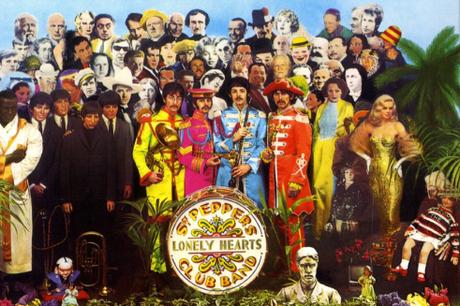 Album cover for the Beatles’ Sgt. Pepper’s Lonely Hearts Club Band (1967)
Album cover for the Beatles’ Sgt. Pepper’s Lonely Hearts Club Band (1967)A Year in the Life
If 1968 was considered a landmark year for our planet, then 1967 was its precursor. The pre-revolutionary tide that 1967 ushered into the U.S., Europe, Latin America and elsewhere was already hinted at in the performing arts and in our pop music. The actual physical explosion came later, in 1968. For now, we can relish the times for what they were.
Celebrating the 50th anniversary, then, of the launch of the Beatles’ Sgt. Pepper’s Lonely Hearts Club Band — an obvious outgrowth of the fomenting fervor of the period — your Public Broadcasting Stations (or PBS for short) presented a marathon run of money-raising efforts. But the most significant aspect of the network’s frequent stops for call-in contributions and on-air fund drives came with the showing of a British-made “making-of” documentary, informing viewers that it was 50 years ago this summer that the Fab Four’s milestone recording was first issued.
Highly informative and thoroughly documented, the British host for the program, composer and musician Howard Goodall, took television audiences through a “magical mystery” tour of some of the Beatles’ most memorable tunes and pioneering work methods. The group labored for months on end, along with their producer, Sir George Martin (known widely as the “Fifth” Beatle), at the Abbey Road Studios in London.
Full of fun facts and priceless trivia, the program leaned a bit too heavily on what a so-called “masterpiece” the Sgt. Pepper album undoubtedly was; and how “transformational” and “industry changing” the classic compilation of songs became in the hands of John, Paul, George and Ringo. But instead of turning viewers on to the boys’ superbly recorded output, however, it turned this steadfast fan off to the excessively pedantic and doctrinaire style of presentation.
You can’t blame the Brits for trying, though. They will stiff-upper-lip through anything, if given half a chance. But this Beatles buff was having none of it. I did manage to sit through at least two showings, which is saying a lot for my endurance.
Ultimately, I managed to catch the most pertinent aspects of how the affable team of Liverpudlians enjoyed experimenting with the innovative multi-track recording techniques then employed at the studio. From multiple overdubs and tape splicing, to layering and backward tape loops; from brass bands, Baroque fanfares, piano crescendos, the use of a harmonium, tabla and tamboura, animal noises and sound effects, to a 41-piece orchestra (not to mention drug-induced atmospherics), the songs had a unity of purpose and concentration of thematic ideas that were unlike anything else on the market.
Though not as experimental as some would like for us to believe — the group had released two earlier efforts of more substantive material, to be found on Rubber Soul and Revolver — Sgt. Pepper went on to become the Beatles’ definitive statement on their keen observances of daily life, as well as the influence of everyday occurrences found in British newspapers of the time, along with fond (and not-so-fond) remembrances of their childhood days while growing up in postwar England.
The most arresting development, for non-initiates, was that the songs, “Penny Lane” and “Strawberry Fields Forever,” were actual locations; that both numbers were supposed to be included as part of the original Sgt. Pepper concept. Instead, Capitol Records insisted on releasing the songs as the A and B sides of a single. Since the Beatles had stopped touring altogether in August 1966 — for a variety of reasons, including security issues, inability to progress artistically, and plain old exhaustion — they decided to record them for later use. Eventually, “Penny Lane” and “Strawberry Fields Forever” wound up on their December 1967 Magical Mystery Tour release.
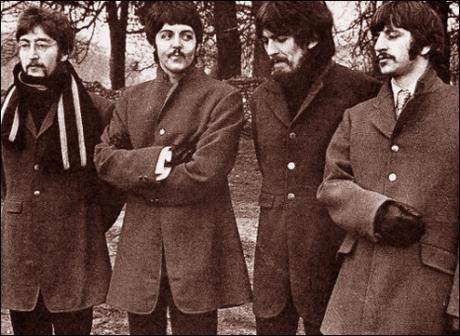
Certainly, if “Penny Lane” and “Strawberry Fields Forever” had been integrated into Sgt. Pepper, perhaps reluctant critics might have been quicker to get on the celebratory bandwagon, so to speak. Such as it was, the album continues to attract new converts. We must consider this undertaking as a major leap forward in the art of popular music.
Days of “Whine” and Roses
Even more striking — and a clear nod to the yet-to-be-born MTV generation — were the idiosyncratic video representations (in living color, no less) that accompanied the two songs. When I first watched these mini-movies on TV in the mid-sixties, I was clearly confounded by the content. So much so that I feared for the Beatles’ state of mind. The viewer is bombarded with a perplexing array of images and head-scratching visuals that transcend the psychedelic LSD trips of the era into outright weirdness.
As bizarre and outlandish as these videos appeared to their fans, however, it was the altered looks of the Fab Four that drew the most attention. Without advance warning, our lads had morphed from the clean-cut, tailor-made young gents they pretended to be (under the tutelage of their manager, Brian Epstein) into the bearded, long-haired British Mod-style pop artistes that they had become.
Disclosures such as these, while they tended to be unnerving in the short run, helped to explain the Beatles’ overall songwriting logic. By shedding new light on the creative process, one could spot clues as to the various personality conflicts and clashes with authority figures the boys were unfortunately prone to. Some of the harshest behavior would come from Paul and John toward the members of the group — but reserved especially for themselves. These were evidenced in many of their songs from that period. In order to concentrate on the Beatles’ individual contributions, I’d like to focus on several of their biggest hits.
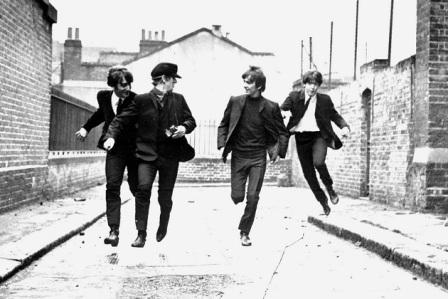
The title of Lennon’s “A Hard Day’s Night” from 1964, for example, was taken from one of Ringo’s frequent malapropisms (“That was a hard day’s night, all right”). Yet the lyrics drove “home” the fact that a working-class stiff such as John would never have amounted to much of anything had he not worked his rear-end off first and foremost, or been forced to do so by others and their specific wants and needs:
It’s been a hard day’s night and I been workin’ like a dog
It’s been a hard day’s night, I should be sleepin’ like a log
But when I get home to you I’ll find the things that you
Will make me feel all right
You know I work all day to get you money to buy you things
And it’s worth it just to hear you say you’re gonna give me everything
So why on earth should I moan, ‘cause when I get you alone
You know I feel OK
When I’m home everything seems to be right
When I’m home feeling you holding me tight, tight, yeah!
Comfort from that certain someone is fine, as far as that goes. For the rich, it’s money in the coffer. For the poor and self-reliant, a loving wife or sweetheart is worth their weight in gold. Whatever gets you through the day — or the never-ending tour, in Lennon’s case. As long as he gets what he needs at night, at the end of a long and tiring day, “everything seems to be right,” for now.
Things went from bad to worse — or “verse” in this instance, with Lennon’s mammoth hit “Help!” which emerged a year later. Here was the songwriter’s cri du coeur, a “cry from the heart” for aid that John was forced to utter and that was openly advertised to the world at large:
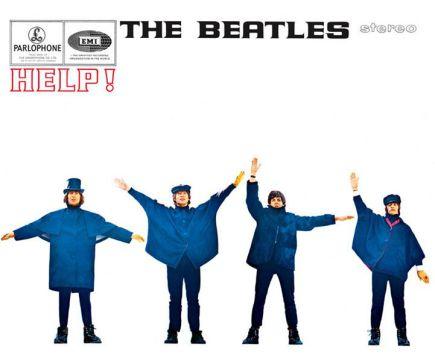
Help! I need somebody
Help! Almost anybody
Help! You know I need someone
Help!
When I was younger, so much younger than today
I never needed anybody’s help in any way
But now these days are gone, I’m not so self-assured
Now I find I’ve changed my mind and opened up the doors
Help me if you can, I’m feelin’ down
And I do appreciate you being ‘round
Help me get my feet back on the ground
Won’t you please, please help me?
And now my life has changed in oh so many ways
My independence seems to vanish in the haze
But every now and then I feel so insecure
I know that I just need you like I’ve never done before
Whatever happened to John’s youthful exuberance, his pride in his accomplishments and his joie de vivre? Where was that spirit of adventure, of trying out new things, of boldly going where no pop-rock band had gone before? If his independence (and, ergo, his individualism) had vanished in the ensuing haze, what was there left for him to do?
“I really was crying out for help,” Lennon later confessed in that famous 1980 Playboy interview. “I meant it — it’s real. The lyric is as good now as it was then. It is no different, and it makes me feel secure to know that I was aware of myself then. I was just singing ‘help’ and I meant it.” He also preferred to have had the song recorded at a slower pace so as to reflect the seriousness of his situation, but so be it.
As much as Lennon’s life was changing in and around 1965 and beyond, it would change even further in years to come when the Beatles would eventually go their separate ways, and when John took up with Yoko and the avant-garde. The most interesting element going forward was that Lennon returned full-blast to his rock-and-roll roots, which was clearly on his mind in the Beatles’ latter work — specifically, in their final recorded effort, Abbey Road from September 1969.
For me, and for people of my generation, the Abbey Road album is our personal Sgt. Pepper. There is something for everyone on this milestone Apple Records production: quirky word-play and tricky poetics in “Come Together,” all-out hard rock sounds in “I Want You (She’s So Heavy),” unfettered soul in “Oh! Darling,” a buoyant sing-along in “Octopus’s Garden,” a jaunty jukebox number in “Maxwell’s Silver Hammer,” two classic forays by the elusive George Harrison in “Something” and “Here Comes the Sun,” lustrous harmonizing by all four of the Beatles in “Because,” and Paul’s extended pop opera for pretty much the last 16 minutes.
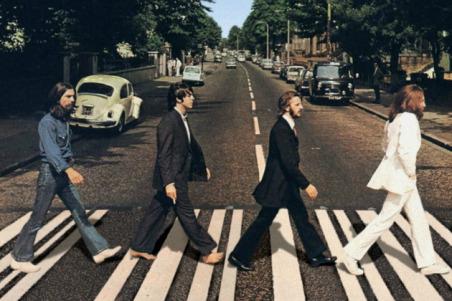
The songs were laid down amid much strife and squabble. John and Paul were going at each other’s throats; George felt rejected and under-utilized by Paul; the happy-go-lucky Ringo gamely soldiered on, in spite of all the controversy. No two Beatles were in the studio at the same time: the backing vocals were recorded separately, and at varying intervals, to be combined later in the finished cut. It’s a miracle that anything came out of those sessions, but it did. The recording techniques the Beatles had learned throughout the intervening years had finally “come together” in this, their crowning achievement.
What’s in a Song?
John Lennon wasn’t the only one to have felt the ill effects of fame and fortune, of over-sensitive egos and non-stop touring and concertizing. Those pent-up emotions bubbled over into some of his band-mate Paul McCartney’s most inspired output.
On the same album Help!, Paul composed a song that has been covered by more artists worldwide than any other Beatles tune to date. The song, of course, was “Yesterday,” released in September 1965, in which McCartney sang solo while accompanying himself on acoustic guitar, with backing by a string quartet (orchestrated by producer George Martin). By way of a self-confessional, Paul chides himself for letting the love of his life slip through his fingers:
Yesterday, all my troubles seemed so far away
Now it looks as though they’re here to stay
Oh, I believe in yesterday
Suddenly, I’m not half the man I used to be
There’s a shadow hanging over me
Oh, yesterday came suddenly
Why she had to go, I don’t know, she wouldn’t say
I said something wrong now I long for yesterday
Yesterday, love was such an easy game to play
Now I need a pace to hid away
Oh, I believe in yesterday
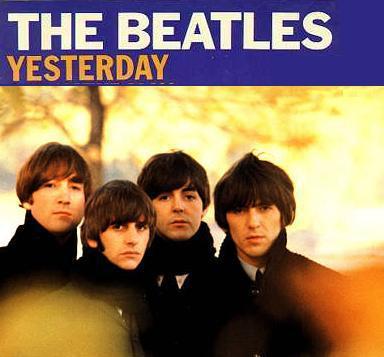
Its brooding, melancholy nature, not at all indicative of the cheeriness and unabashed joy abounding in other Beatles hits, made “Yesterday” a singular creation among the group’s oeuvre. The song was so unusual and so un-Beatles-like (it was the first time that a lone member of the group was recorded without the other three) that it caught the ear (and the profit margins) of their British counterparts, the Rolling Stones.
On a side note, the Rolling Stones’ Mick Jagger and Keith Richards were not directly influenced by “Yesterday” and its popularity when they penned, together with their manager, Andrew Oldham, the lovely “As Tears Go By” for the 17-year-old Marianne Faithful in 1964. Similarly, their version, recorded and released as a single in December 1965, also utilized the scoring of strings. This suffused the number with a fragile air of poignancy not normally associated with the Stones’ otherwise bluesy arrangements.
The song’s strongest point is its simple and moving lyricism, beautifully articulated by Jagger in softly uttered cadences:
It is the evening of the day
I sit and watch the children play
Smiling faces I can see
But not for me
I sit and watch
As tears go by
The next stanza is the more telling of the three, in that it expresses a rueful attitude about man’s accumulated wealth that is totally unanticipated, coming as it did from the likes of Jagger and Richards:
My riches can’t buy everything
I want to hear the children sing
All I hear is the sound
Of rain falling on the ground
I sit and watch
As tears go by
The last few verses speak of old age and its inherent wistfulness as we reach that final plateau — something that both these gentlemen, and all of us for that matter, will inevitably have to face:
It is the evening of the day
I sit and watch the children play
Doing things I used to do
They think are new
I sit and watch
As tears go by
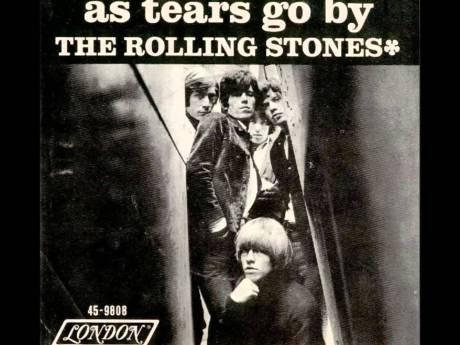
Self-reflection is not the kind of methodology one would expect from British rock stars of the 1960s. Nevertheless, here it was, in all its frankness.
(End of Part One)
To be continued….
Copyright © 2017 by Josmar F. Lopes
Advertisements
